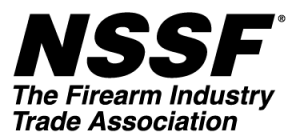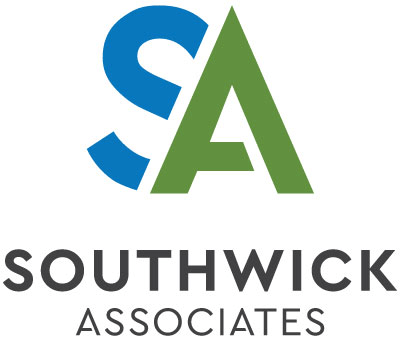 The Wildlife Restoration Program
The Wildlife Restoration Program
Through the Wildlife Restoration Program, funded by the Pittman Robertson (PR) Act, the hunting, shooting, and archery industries have created both a strong industry and a bright future for recreational hunting and shooting in America.
The Wildlife Restoration Program
In the early 1900s, many North American native species faced a bleak and uncertain future. Fortunately, sportsmen conservationists – with industry’s support – stepped in and by 1937, created the Wildlife Restoration Program to provide sustainable funding for wildlife restoration and conservation. Today the program continues to protect and restore wildlife, open new hunting opportunities while also recruiting new sportsmen and women through the construction of firearm ranges and hunter education. A look at the numbers include:
10-11%
TAX
Funding comes from a 10-11% tax on sporting arms, ammunition, pistols, revolvers, and archery equipment.
$13 BILLION
TAX
Since 1937, the Wildlife Restoration Program has invested more than $13 billion in wildlife restoration in the United States.
$600
MILLION
Today, the excise tax generates over $600 million annually.
FUNDING
PLANS
These funds are distributed by the U.S. Fish and Wildlife Service to state fish and wildlife agencies based on specific plans submitted by the various state agencies.
FEDERAL
LAW
By federal law, these dollars can only be used to enhance hunting and recreational shooting, preventing states from diverting these funds to other uses.
DOLLAR
MATCHING
Every three Wildlife Restoration dollars spent on state projects must be matched with a dollar from a non-federal source, such as hunting license fees or funds from other state and private sources.
Success by the Numbers
This user pay system has generated outstanding dividends for anglers from coast to coast. Recent numbers from the US Fish and Wildlife Service show that the Wildlife Restoration program provides the funding for the following on a national level:

500
500 species of wildlife that agencies monitor, research, and manage with these important funds.

553
553 firearm ranges that have been designed, constructed, renovated, or opened to the public in the past five years with many more under development.

1 Million
1 million people received hunter education training every three years.

46.9 M
46.9 million acres that are being maintained for public access and habitat management.

$943 M
On average, $943 million in annual funding is generated from license fees and manufacturers’ excise taxes.
On the state level, the combination of federal and state dollars have resulted in:

200,000
Alabama’s deer population grew from 15,000 in 1937 to 1.6 million in 2018, allowing the hunting season to increase from 42 days to 118 days. Hunters now harvest over 200,000 deer annually.

183
Illinois waterfowl regulations only allowed for a 30 day season in 1937. Thanks to focused conservation efforts, an Illinois hunter can now enjoy 183 days of waterfowl hunting.

153
In 1937, New Mexico’s deer and elk hunters only had 15 days of hunting each species. By 2018, 153 days were available for deer and elk hunts, an increase of 920%.

81
Colorado bear hunters were only allowed a limited 7 days of hunting in 1937. Today, they can hunt for 81 days, a 1057% increase!

30,000
In 1937, Massachusetts turkey hunting was nonexistent. In 2018, the turkey season was 83 days, with hunters taking 30,000 turkey.
Hover over a state to see additional examples of how the
Wildlife Restoration program has enhanced hunting:
Case Studies
Idaho
Black Creek Range
Black’s Creek Shooting Range (BCR) is located approximately 25 miles from downtown Boise and is one of the largest and most visited ranges in Idaho. Established in 1976, the range has grown to offer more than 40 benches, many of them under a covered area, a wide variety of shooting distances, and handicap accessible public facilities. Visits to the range have grown steadily from 4,800 to 6,700 days annually, between 2014 and 2018 respectively. A 38% increase over the period, with the largest proportional increase taking place between 2017 and 2018, following a period of significant investment in target shooter support. Total estimated target shooter spending on excise tax related items is an estimated $1.3 million. Investments allocated to the range improvements is estimated to total $784,000, providing industry a 62% return.
South Dakota
Walk-In Access
With more than three-quarters of the state’s land under private ownership, access to those lands is critical to the for South Dakota’s hunting community. More than 180,000 days of recreational hunting days are spent on Walk-In Access lands each year. Over recent years past, the focus has been recruiting landowners and acres in the southeastern part of the state where roughly 50% of the population reside to provide close-to-home hunting opportunities. These recruitment efforts are teamed with outreach efforts to raise awareness of the program along with user-friendly geospatial navigational tools enabling hunters to easily access up-to-date information about lands open for public use. Total annual hunter spending on taxable hunting items in 2019 was an estimated $4.2 million. Investments allocated to the Walk-In Area Program in 2019 was $1.6 million, providing industry a 165% return.
Oklahoma
Lexington WMA Shooting Range
The shooting range located within the Lexington Wildlife Management Area (WMA) is about an hour south of Oklahoma City and offers thousands of visitors the opportunity for outdoor sporting activities. Total estimated spending by target shooters on excise tax related items is an estimated $1.7 million. WSFR investments allocated to the range improvements is estimated to total $307,000, which provides industry a 358% return.
To all businesses who pay the tax, thank you for your investment! It’s the key ingredient behind the shooting sports industry that we know today and tomorrow.
For more information on the role industry is playing in conservation, download the full technical report and visit the U.S. Fish and Wildlife Service’s Partner with a PayerSM website.











